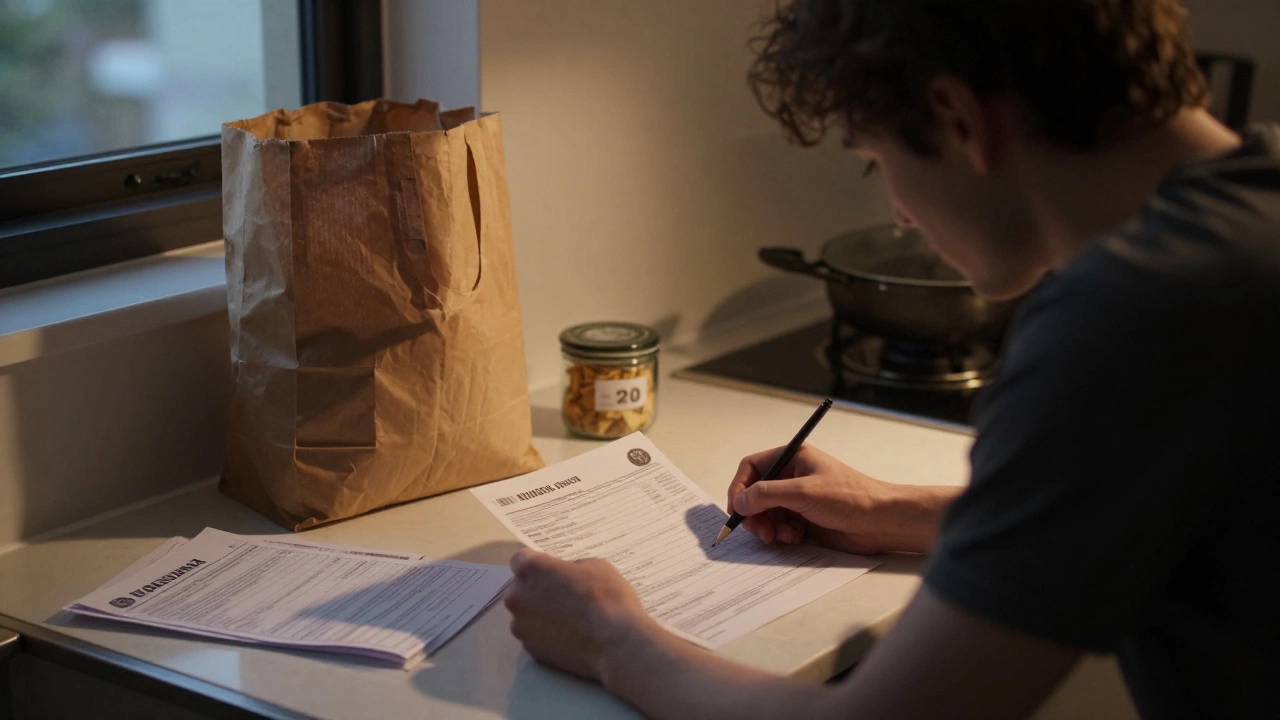Budgeting Tips You Can Start Using Today
Feeling like your money disappears the moment it hits your account? You’re not alone. Most people skip the basics and end up frustrated. The good news? A few clear moves can change that fast. Below are straight‑forward budgeting tips that work for anyone, whether you earn £2,000 or £5,000 a month.
1. Know Where Every Pound Goes
The first step is simple: track every expense for at least two weeks. Write it down, use a spreadsheet, or grab a budgeting app – whatever feels easiest. When you see that ten‑pound coffee run adds up to £200 a year, you’ll understand why the habit matters. Categorise spending into needs (rent, bills, groceries) and wants (eating out, streaming). This split helps you spot the real levers you can pull.
2. Build a Zero‑Based Budget
A zero‑based budget means every pound has a job – from rent to saving. Start with your net income, then assign amounts to each category until the total equals zero. If you earn £3,000, you might allocate £1,200 to housing, £400 to utilities, £500 to groceries, £300 to transport, £300 to savings, and £300 to discretionary spending. The key is that nothing is left unassigned. When a month ends, adjust the numbers based on what actually happened and repeat.
Why does this help? It forces you to think before you spend. Instead of asking “Can I afford this?” you’re answering “Does this fit into my budget?” and you’ll avoid impulse buys.
Here’s a quick cheat‑sheet to get you started:
- List net income.
- Subtract fixed costs (rent, utilities, insurance).
- Set a realistic grocery budget – try the 50/30/20 rule: 50% needs, 30% wants, 20% savings, then tweak to fit your life.
- Allocate a “fun” fund. Giving yourself a small, guilt‑free allowance keeps you from overspending elsewhere.
- Review weekly. If you’re over in one category, move money from another.
3. Automate Savings and Bills
Automation removes the temptation to skip saving. Set up a direct debit that moves a fixed amount into a separate savings account the day you get paid. Do the same for regular bills. When the money is already out of your main account, you won’t be tempted to spend it on a night out.
4. Use the 20 % Credit Card Rule
If you carry a credit card balance, aim to keep it below 20 % of your credit limit. This protects your credit score and reduces interest charges. Pay the full statement balance each month if you can; otherwise focus on the highest‑interest cards first.
5. Review, Tweak, Repeat
Budgeting isn’t a set‑and‑forget task. Life changes – a raise, a new lease, a big purchase – and your budget should adjust. Schedule a 30‑minute review at the end of each month. Look at what worked, where you overspent, and how you can improve next month.
6. Keep an Emergency Fund
Even the best budget can’t predict a broken fridge or a sudden job loss. Aim for three to six months of essential expenses in an easy‑access account. This buffer stops you from dipping into long‑term savings or going into debt when surprise costs appear.
7. Make It Personal
Everyone’s financial situation is different, so feel free to tweak these tips. If you’re a student, your rent might be a larger share of income, so focus on cheap meal ideas and free entertainment. If you own a home, channel extra cash into mortgage overpayments. The budget works for you, not the other way around.
Bottom line: budgeting isn’t about restricting freedom; it’s about giving yourself control. Start small, track honestly, and let the numbers guide you. In a few weeks you’ll see where money leaks, and you’ll have a clear plan to keep more of it in your pocket. Happy budgeting!
How much money should I have after bills? A realistic guide for Australian households

After paying bills, how much should you have left? In Australia today, most people are left with little to nothing. This guide shows realistic targets, real examples, and practical steps to build a safety net-even on a tight budget.
Read More >>3 R's of a Good Budget: Simple Tips for Smarter Money Management

Learn the 3 R's of a good budget-Reality, Reserve, Review-and how to apply them for smarter money management and a solid emergency fund.
Read More >>Simple Basic Budget Setup: Your Guide to Smart Money Management

Learn exactly what a good basic budget looks like, plus easy tips, proven structures, and real strategies regular people use to get finances under control.
Read More >>75-15-10 Rule: Simple Budgeting That Actually Works

The 75-15-10 rule is a practical way to split your income for smarter budgeting. It suggests putting 75% to needs, 15% to wants, and 10% to savings or debt payments. This article breaks down how the rule works, where it comes from, and who it might help the most. You'll also find tips for making the numbers work in real life and common mistakes to avoid. If other budgeting methods have left you confused, this approach could be the refresher you need.
Read More >>4 Steps to Better Budgeting

Budgeting can seem daunting, but breaking it down into simple steps makes it manageable. Discover four straightforward steps to improve your budgeting skills, making it easier to track spending, save money, and achieve financial goals. From understanding your spending habits to setting realistic financial targets, this guide provides practical tips to help you take control of your finances. Learn how to make budgeting a stress-free part of your life.
Read More >>Deciphering the Mystery: What Is Leftover Budget Called?

Ever found yourself with extra money at the end of the month and wondered what to call it? That's your leftover budget, often referred to as a budget surplus or savings cushion. This article dives into the essentials of understanding and effectively using this surplus to boost your financial health. Covering practical tips, strategies, and common pitfalls, it's your guide to making the most of your budget surplus without a hitch. Let's uncover the potential of your leftover budget.
Read More >>How Many Americans Have $200k in Savings and Essential Budgeting Tips

Discover how many Americans hold $200k in savings and explore effective budgeting tips to boost your financial security. This detailed examination provides insights into the saving habits of people and suggests practical ways to enhance your savings plan. Learn why having a substantial savings account is crucial and how you can achieve this milestone regardless of your current financial status.
Read More >>